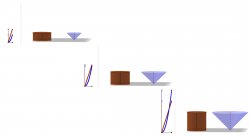Math faculty receives grant to help middle school students better understand graphs and data
Dr. Teo Paoletti’s project: Developing Middle-School Students’ Understandings of Coordinate Systems (Mid-CoS) Project.
Posted in: CSAM Research

Dr. Paoletti was one of only a few recipients of this year’s Spencer Foundation grants, an organization that receives 1000 or more proposals and funds 5-10% of that. The foundation’s goal is to invest in education research for the purpose of making education better, and this project was 100% applicable to that mission. The project focuses on STEM fields that commonly communicate information through graphs representing two (or more) covarying quantities. For instance, graphical representations are used in physics textbooks to show how the position of an object changes over time, and in chemistry textbooks to represent how the volume of a gas varies as the temperature of the gas changes.
Despite the importance of graphs in STEM fields, mathematics and science education researchers have shown that students of all ages experience persistent difficulties constructing and interpreting such graphs. Dr. Paoletti’s goals are (a) to examine how to leverage middle school students’ reasoning about quantities that change in tandem to develop understandings of graphs as representing covarying quantities and (b) to develop a sequence of lessons to promote students’ graphing understandings grounded in this reasoning. By designing dynamic interactive tasks with varying quantities, Dr. Paoletti and colleagues are investigating the ways in which students are imagining quantities changing and, through their descriptions and graphical representations, how two quantities are changing in tandem. Additionally, Dr. Paoletti and colleagues are investigating how such tasks can be integrated into the existing middle school curricula to support students’ variational reasoning, covariational reasoning, and their developing understandings of coordinate systems and graphical representations.
